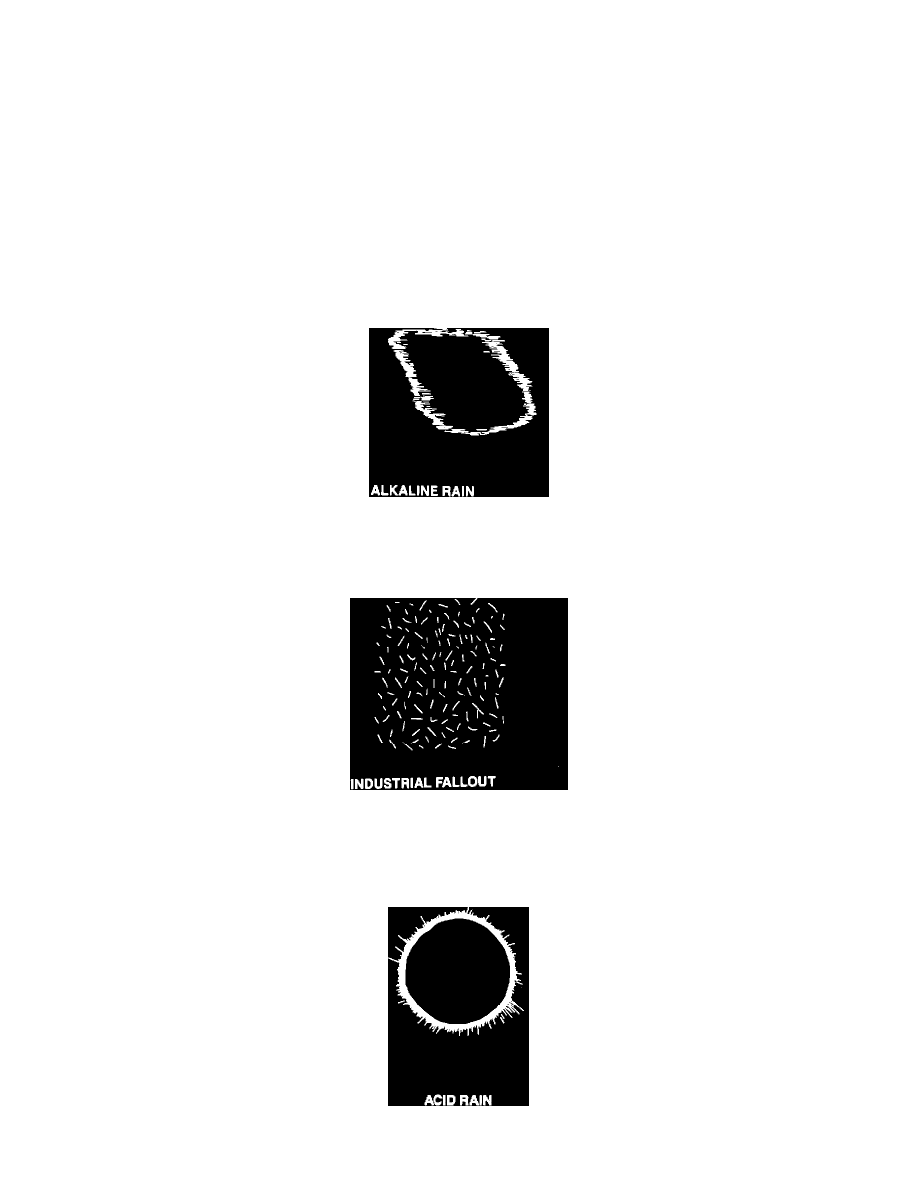D50/Power Ram 50 V6-2972cc 3.0L SOHC (1990)

DATE:
Sept. 10, 1990
SUBJECT:
Base/Clearcoat Paint Damage Resulting From Alkaline Spotting, Industrial Fallout, Or Chemical Etching
MODELS:
All 1990 Models with Clearcoat Paint
SYMPTOM/CONDITION
Occasionally vehicles painted with basecoat/clearcoat (BC/CC) finishes may encounter paint damage from either alkaline spotting, industrial fallout or
chemical etching. This damage usually appears as water spots on horizontal surfaces in a variety of patterns. Affected areas may include the hood, roof,
or the tops of the fenders. Areas generally not affected are the vertical panels such as the lower panels on the doors, fenders, and front and rear bumpers.
Damage Identification
It is very important to determine the type(s) of damage the paint has been subjected to in order to select the correct repair method and materials. Doing
so will minimize the time required to make the proper repair the first time.
Remember, one or more of the following types of damage can be found on a painted surface at one time.
Figure 1
Alkaline spotting (Figure 1), is caused by alkaline rain or hard water from sources such as lawn sprinklers and cannot be removed by using soap and
water.
Figure 2
^
Industrial fallout (Figure 2) is the result of airborne iron particles falling on the vehicle that, over a period of time, can eat through the paint.
The particles may be detected as a gritty or bumpy feeling on the surface of the clearcoat. On light colored vehicles, rust stains may appear
and the particles may attract to a magnet.
Figure 3
